Affiliate links on Android Authority may earn us a commission. Learn more.
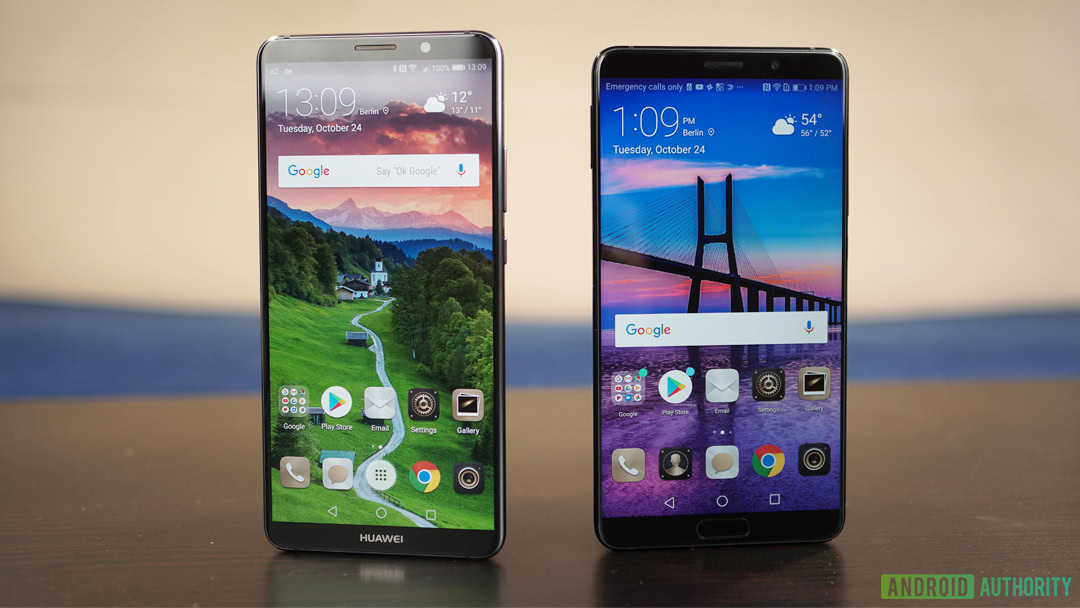
Huawei Mate 10 Pro
What we like
What we don't like
Our scores
Huawei Mate 10 Pro
Update: Both the HUAWEI Mate 20 Pro and Mate 30 Pro are now available and well worth a look, although only the Mate 20 Pro still comes with Google apps and services.
The HUAWEI Mate 10 series is all about promises: the promise of AI on your smartphone; the promise of a rising star in the industry; the promise of a better long-term future for your device.
HUAWEI has been hot on the heels of its main rival Samsung for years, building its global market, while slowly increasing its Western mind share. It’s become in many ways the premier innovator in the smartphone space.
With the Mate 10 and Mate 10 Pro, HUAWEI has delivered its latest salvo in the battle against other mainstream manufacturers and the results are very compelling. Despite a few odd choices, like using a lower resolution screen and omitting the headphone jack on the Pro model, these devices are pretty incredible. This is the HUAWEI Mate 10 and Mate 10 Pro review, so let’s dive in.
Design
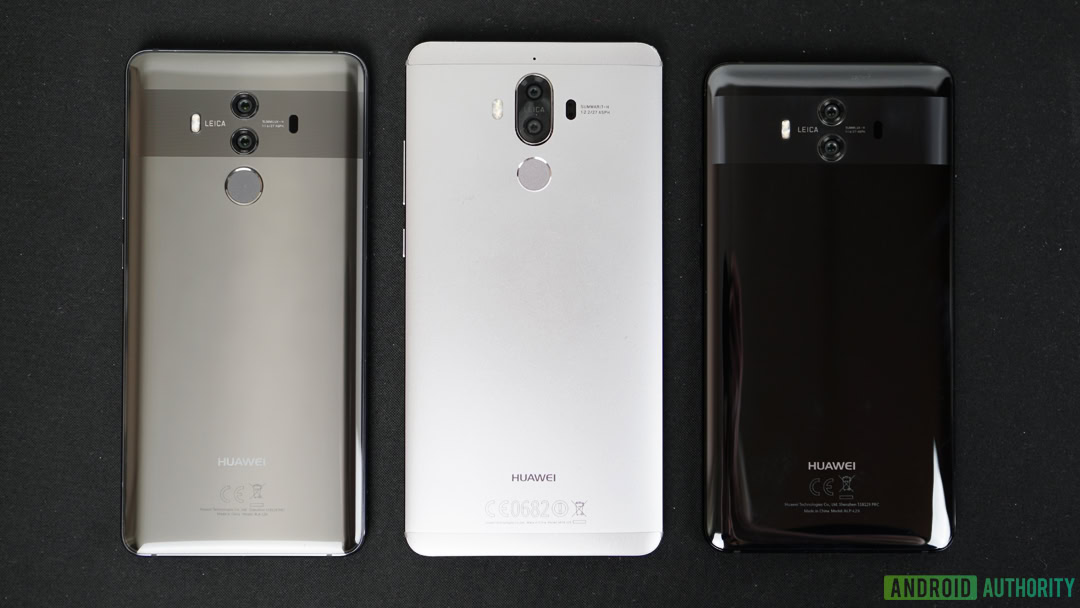
With the Mate 10 and Mate 10 Pro, HUAWEI has moved away from its signature all-metal design. Like most 2017 flagships, these phones opt for a glass front and back around an aluminum frame.
HUAWEI didn't add wireless charging, despite the change to a glass back.
This shift is a positive change. The phones look and feel magnificent, even if they collect fingerprints much more than their metal-clad predecessors. For some reason HUAWEI didn’t think adding wireless charging was necessary, despite the change to a glass back.
The two phones look almost identical from behind, barring the rear-mounted fingerprint scanner on the Pro version and their overall shape, which is slightly different. The Mate 10 Pro assumes the 18:9 aspect ratio, common to 2017 flagship displays. As such, it is taller and thinner than the Mate 10, which retains the traditional 16:9 ratio.
Despite the differences in size and shape, they weigh pretty much the same, at 178 grams for the Mate 10 Pro and 186 grams for the Mate 10. Compare that to the 190-gram Mate 9 or the 195-gram Galaxy Note 8 and you get a feel for their heft.
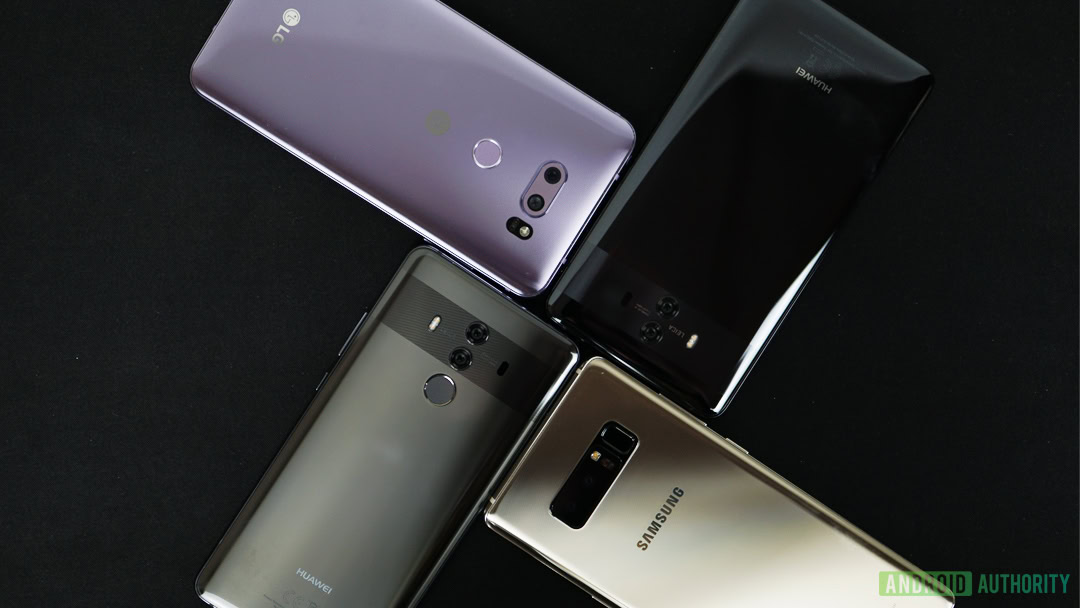
Compared to a similarly-sized phone like the LG V30, which only weighs 158 grams, both Mate 10’s are relatively weighty for their size. However, they do have a 20 percent larger battery than both the Note 8 and V30, making that added heft totally worthwhile.
The main differences on the front are again fingerprint scanner-related. The Mate 10 squeezes an elongated scanner in the bottom bezel, which isn’t actually much larger than the “bezel-less” Mate 10 Pro. The upshot of this placement is that the regular Mate 10 doesn’t have any front-facing branding, which some will love.
Both Mate 10's have a 20 percent larger battery than both the Galaxy Note 8 and LG V30.
There’s very little to dislike about either Mate 10 design, besides natural preferences for front- versus rear-mounted fingerprint scanners, manufacturer branding, and the presence of headphone ports (only the Mate 10 has one). If anything they just look a little unexciting, but these devices comfortably fit within HUAWEI’s understated-but-premium design language, which has always been better than most.
Display

The display is where the Mate 10s are most different. HUAWEI has made some interesting decisions here. The Mate 10 Pro has an OLED screen with the fashionable 18:9, or Univisium, aspect ratio, and supports HDR10. On the other hand, the Mate 10 has a 16:9 aspect ratio and uses an IPS LCD panel instead, though it also has HDR10 certification. Neither panel has the rounded corners we’ve seen on several other flagships this year.
HUAWEI also decided to put QHD resolution on the regular Mate 10 only, although it defaults to Full HD out of the box. The Pro version ships with Full HD+.
The Mate 10 offers QHD resolution, while the Pro version ships with Full HD+.
The pixel density of the Mate 10 Pro is therefore significantly lower than the Mate 10’s, at 402 ppi compared to 498 ppi. While it is a noticeable difference, most users will make the decision based on which aspect ratio they prefer and whether they’re into LCD or OLED.
The upshot of the OLED panel on the Mate 10 Pro is the presence of an always-on display, though it’s oddly hidden in the settings by default. To enable it, go to Settings > Security & Privacy >Screen Lock & Passwords > Always Display Information and flip the switch.
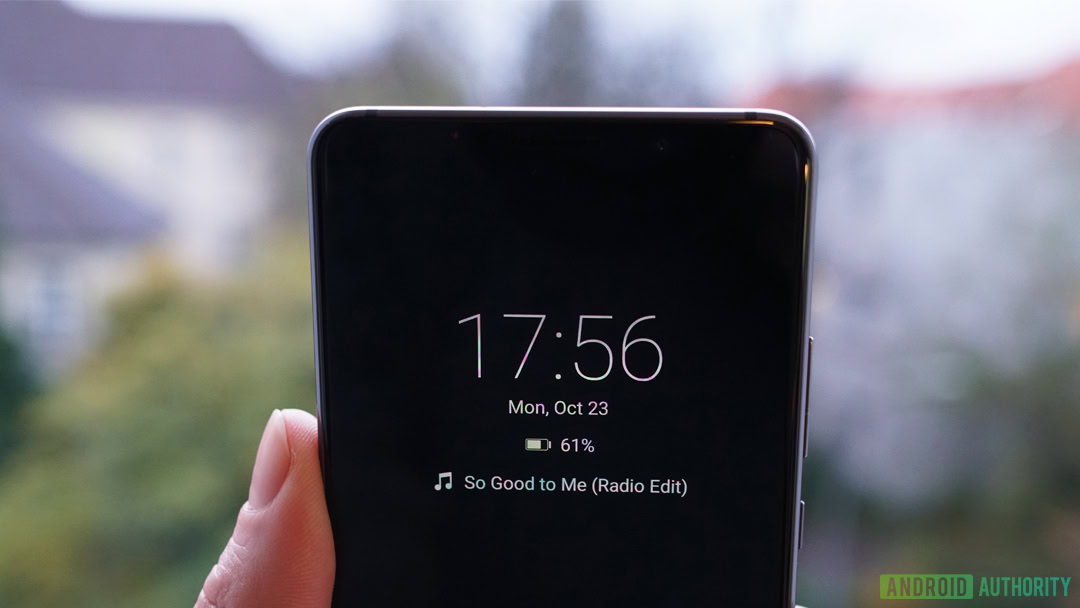
The always-on display will show the time, date, battery percentage and what music is playing, as well as app notifications— though only for HUAWEI’s pre-loaded apps. So no WhatsApp, Gmail or Snapchat, kids. Sorry.
The Mate 10 Pro has great viewing angles, only suffering from color shift at extreme angles. The resolution difference is hardly noticeable, and even then you’ve got to really look for it. The Mate 10 Pro’s OLED panel naturally produces better blacks and slightly punchier colors, but the Mate 10’s IPS LCD does an admirable job.
The Mate 10 has slightly weaker viewing angles, but both devices can hit 730 nits of brightness. Both are perfectly legible outdoors in bright sunlight. The Mate 10 display was a bit too cool for my tastes out of the box. It had a slightly blueish tint and a little less life to its colors. Fortunately, HUAWEI lets you adjust the color temperature in settings.
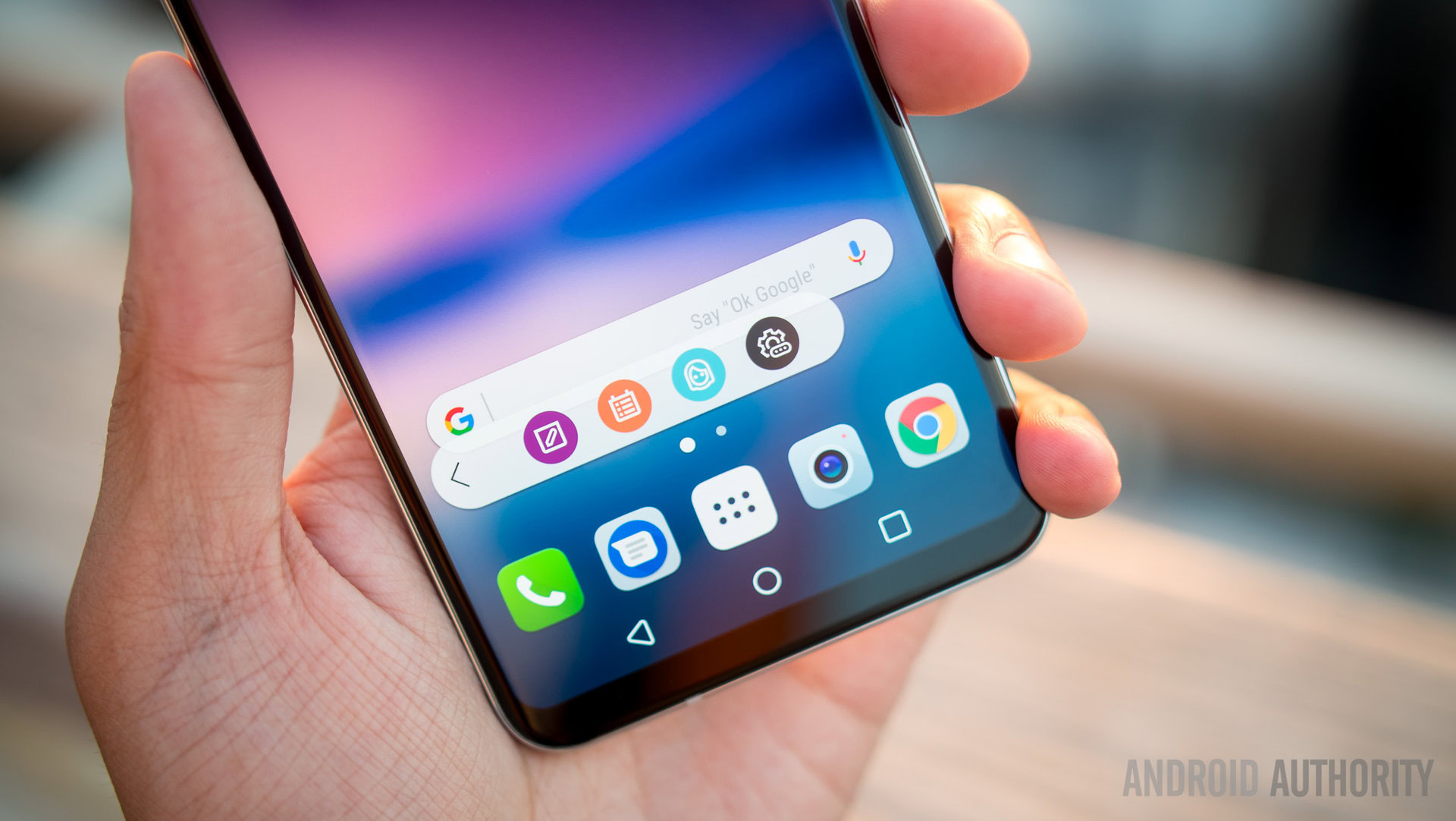
Both the Mate 10 and Mate 10 Pro support HDR10, and while neither worked with YouTube HDR content during the review period, HUAWEI assured me it was coming. Netflix and Vimeo are your best bet for HDR content right now. Both devices are also in the process of being Daydream-certified.
Hardware
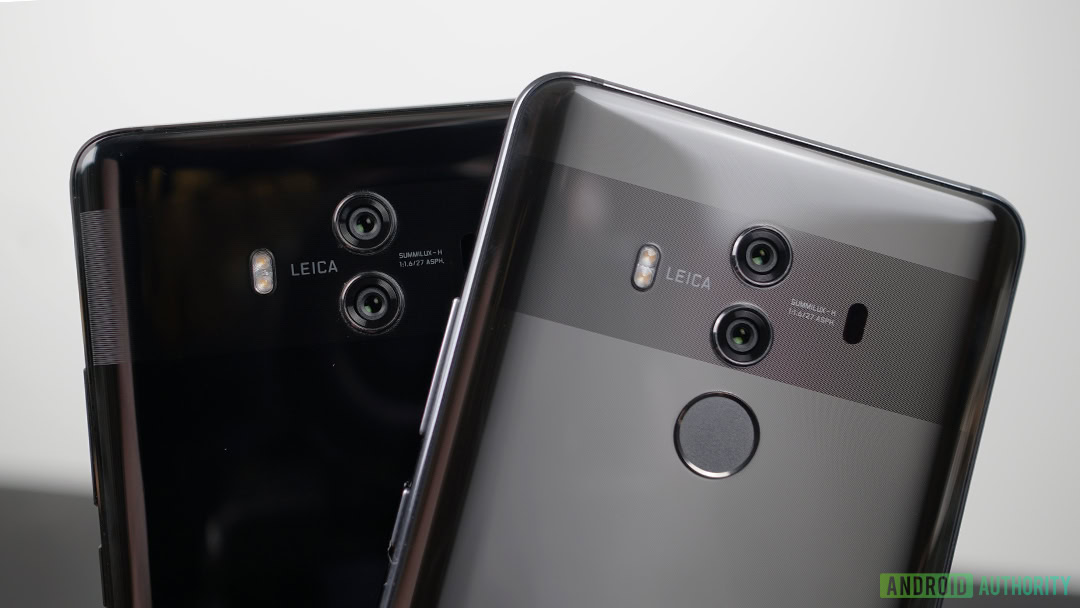
As always with HUAWEI, the hardware on the Mate 10 and Mate 10 Pro is impeccable. The build quality is excellent and the machining is top-notch.
Both phones have a volume rocker and power button on the right, but only the Mate 10 Pro has a fine matte finish to it. They both have a single speaker grille on the bottom (the earpiece speaker provides the second speaker for stereo sound), a USB Type-C port, and a pair of pinhole mics.
On the left, a SIM card tray pops out to reveal dual-SIM slots on the Mate 10 Pro. The Mate 10’s got a hybrid dual-SIM slot, which lets you pick between a microSD card or a second SIM card.
The Mate 10 offers microSD expansion and a 3.5mm headphone port, neither of which appear on the Mate 10 Pro.
The Mate 10 comes in one model with 64 GB of on-board storage and 4 GB of RAM. The Mate 10 Pro has two models: one with the same pairing and another with 6 GB of RAM and 128 GB of storage, but neither of which have microSD expansion.
Up top, there’s an IR blaster and another pinhole mic on both devices, but only the regular Mate 10 has a 3.5 mm headphone port. Because the Mate 10 and 10 Pro ship with Android Oreo, you can take advantage of a bunch of audio codecs (including aptX , aptX-HD and LDAC) for a better Bluetooth experience than you’d get on a pre-Oreo device. Note that the Mate 10’s use Bluetooth 4.2, so you won’t benefit from the additional range or higher throughput of Bluetooth 5.
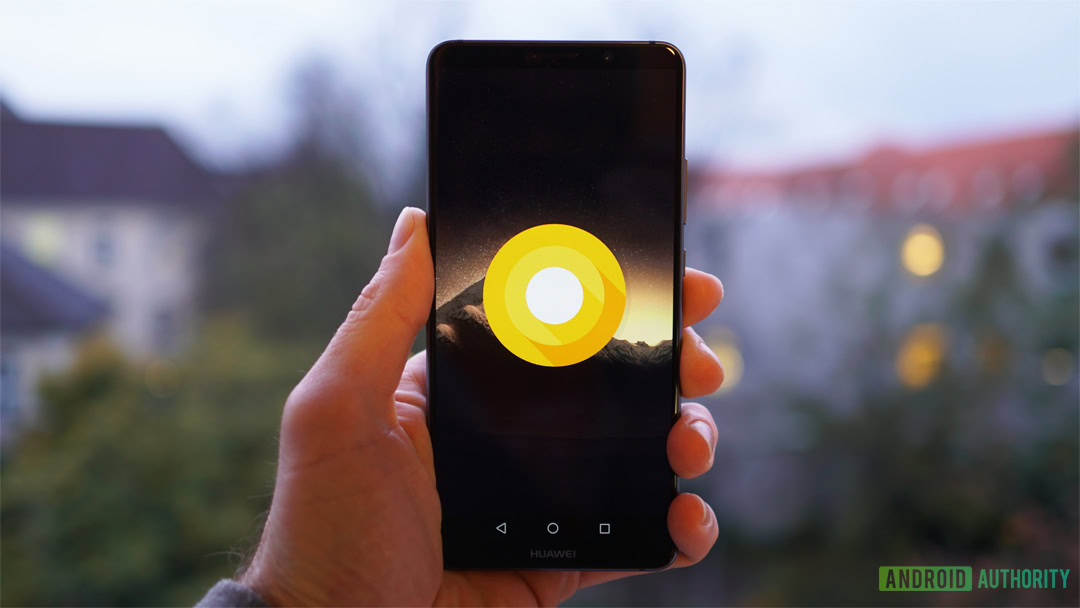
Support for lossless 32-bit audio at 384 kHz is a nice touch of overkill but the presence of high-end codecs in Oreo and an included Type-C to 3.5 mm adapter will not be enough to satisfy every potential Mate 10 Pro buyer who prefers wired headphones. HUAWEI Histen audio tuning is available when you plug in though, and there’s some decent USB Type-C earbuds in the box.
There's lossless 32-bit audio at 384 kHz, high-end codecs in Oreo and an included Type-C to 3.5 mm adapter with the Mate 10 Pro.
The Mate 10’s external speakers get plenty loud, easily hitting 80 dB. At max volume it’s not the most pleasant audio experience. It gets a little tinny for my liking, especially from the earpiece speaker. If you keep it to around 80 percent volume, the result is perfectly acceptable, if not exceptional.
The Mate 10 series features the world’s fastest 4.5G modem with 5CC carrier aggregation, 4×4 MIMO, dual 4G VoLTE, 256-QAM and Cat.16 (Mate 10) and Cat.18 D (Mate 10 Pro) data speeds. Naturally, call quality was excellent, which is also assisted by AI-powered voice recognition and in-call noise cancellation.
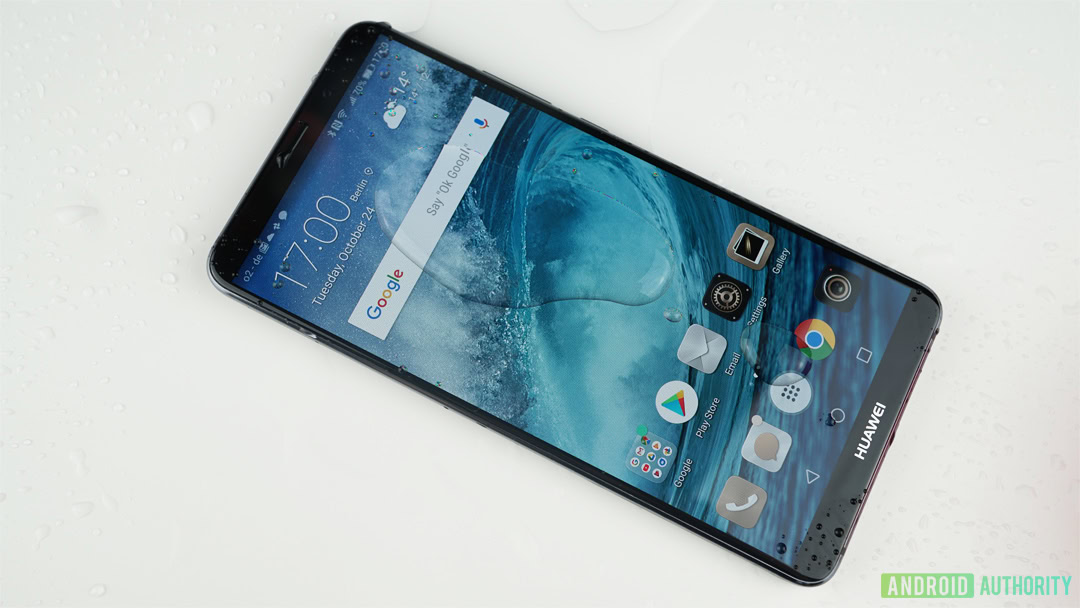
Only the Pro has an IP67 dustproof and water-resistant rating (up to a meter for a half hour). The regular Mate 10 has an IP53 rating, which is on the don’t-count-on-it-for-anything-end of the spectrum.
The fingerprint scanner on both devices is lightning fast and reliable, just as we’ve come to expect from HUAWEI. HUAWEI says it unlocks the device in just 0.33 seconds, and I have no reason to doubt it.
HUAWEI has added “enhanced GPS technology” to its multi-sensor navigation, including inertia tracking and offline data to get you better location data when in tunnels or out of a service area. While I can’t say I found myself lost in the woods during the testing period, it’s a nice thing to have in the back of your mind if you ever do.
As an added bonus, both devices come with clear rubberized plastic cases to help mitigate fingerprints and save that shiny exterior from scratches and scrapes.
Performance

The Mate 10 and Mate 10 Pro both ship with HUAWEI’s 10 nm HiSilicon Kirin 970 chipset, complete with a dedicated Neural Processing Unit for faster on-board AI processing. Gary Sims covers the NPU in far more detail here. For now, it offers a relatively limited feature set which basically boils down to:
- Scene recognition in the camera app
- Translation (photo-based, no live view or audio for now)
- Resource allocation
- Smart tips (based on context awareness, like suggesting the blue light filter when you’re reading in a dark environment etc)
- Noise-canceling and voice recognition in calls
HUAWEI assures me that, over time, new features that take advantage of the NPU’s abilities will be added (rather than being held over for release with the HUAWEI P11 or Mate 11). HUAWEI has positioned the Kirin 970 as an open platform for mobile AI development, to encourage new applications to take advantage of the NPU. But they’re also working with key partners to make that happen faster.
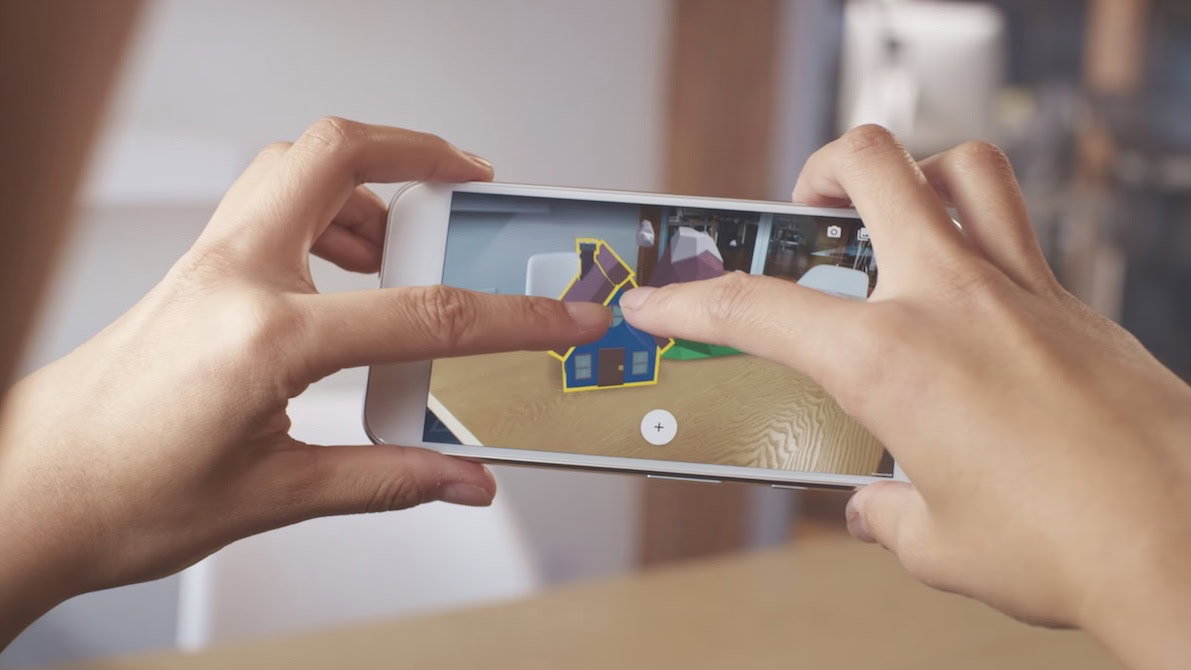
For example, the next Android maintenance release, scheduled for later this year, will add support for Google’s ARCore. Google’s Neural Network APIs will also be added to the Mate 10 via an update early next year. HUAWEI is in the process of getting Google Translate to work with the NPU in the same way the Microsoft Translator app does.
The Kirin 970 uses an octa-core configuration made up of four high-performance Cortex A73 2.36 GHz cores and four energy-efficient Cortex A53 cores that clock in at 1.8 GHz. Along with an i7 co-processor, the SoC features the world’s first Mali-G72 MP12 GPU, as well as the brand new NPU.
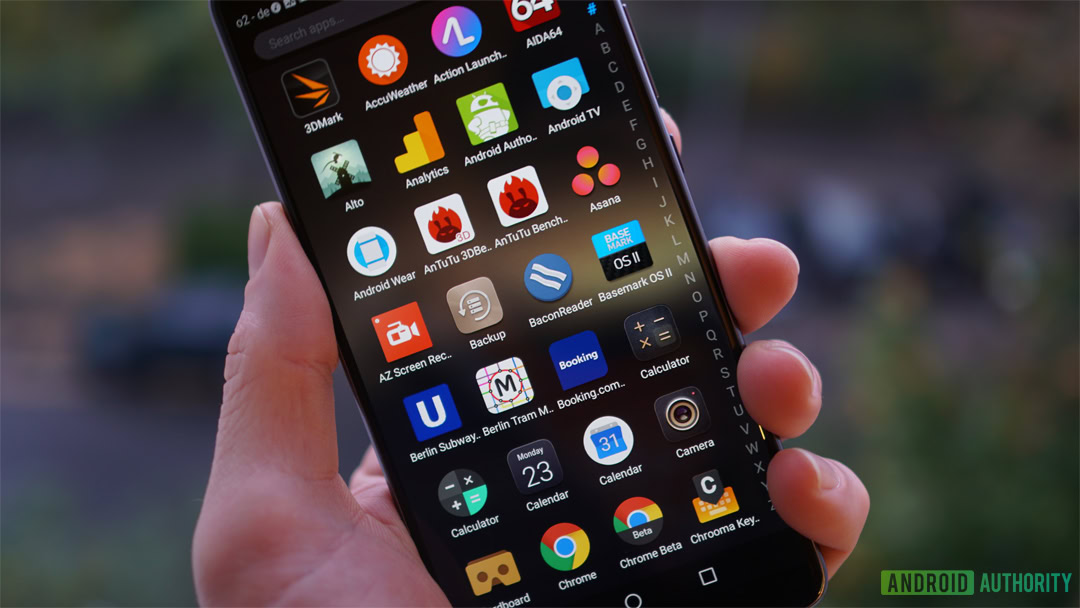
I primarily used the 128 GB Mate 10 Pro with 6 GB of RAM during the testing period, and, while on paper it packs quite a punch, I encountered a few glitches. Like any phone, minor stutters appeared on occasion but cleared up either after a restart or by clearing cached apps. HUAWEI actually put out two updates in the last week, so the versions that hit stores may be more stable. Note: I did find the stability of the Mate 10 Pro improved after a few more updates and experienced no real performance issues from the retail unit.
It wasn’t just the usual stuff, though.
On two separate occasions, the Mate 10 wouldn’t unlock normally. Tapping the fingerprint scanner and power button had unusual results, neither doing what you’d expect. Tapping the fingerprint scanner either did nothing or showed the lock screen with a different battery percentage than on the always-on display. Pressing the power button didn’t always turn the screen on either. Sometimes I had to force restart the phone to get things back to normal. It should be noted that both of these instances occurred after Google issued a bug fixing update and disappeared after a factory reset.
The Mate 10's offer considerable performance with the promise of getting better over time — or at least not degrading as fast as other phones.
Google apps didn’t always play nice with the Mate 10 Pro, either. Gmail would occasionally only show half a screen of emails. When switching to another account, it sometimes wouldn’t show any emails at all. Closing the app and restarting it cleared up the issue. Likewise, for a while all YouTube notifications came through with the same thumbnail, regardless of the channel.
If you can get beyond these issues as early teething problems or possibly related to Google’s bug fixing patch, the HUAWEI Mate 10 offers considerable performance with the promise of getting better over time— or at least not degrading as fast as other phones. Here’s some benchmarks to whet your appetite.
Battery
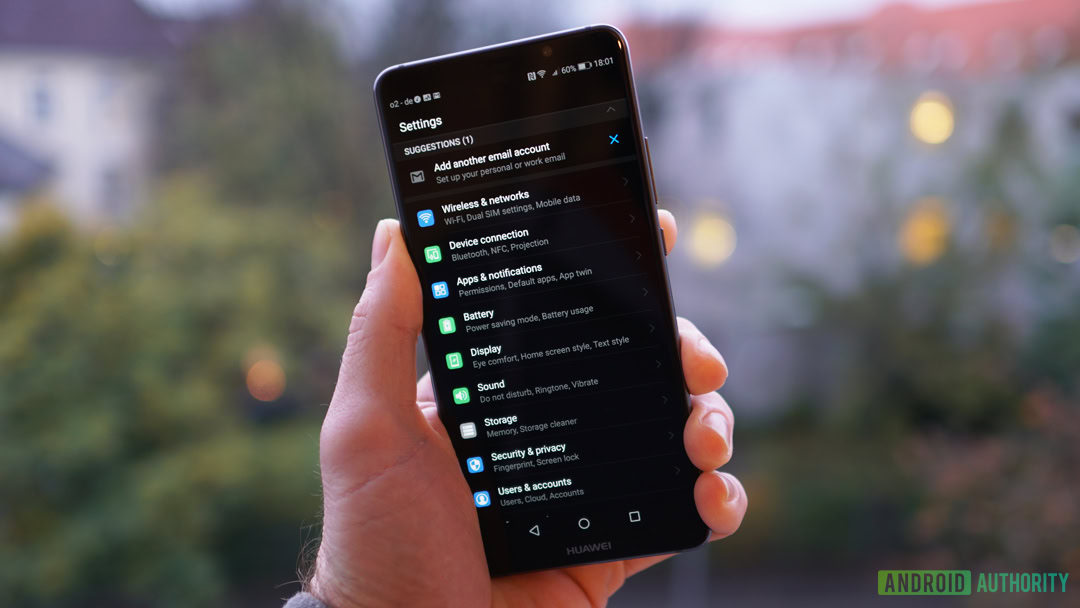
Both versions of the Mate 10 ship with a large 4,000 mAh battery and support HUAWEI Supercharge via the included 4.5V/5A charging brick. Charging a fully-depleted device with the power off, you’ll get between 30-35 percent charge in 15 minutes, 55-60 percent in a half-hour and 85-90 percent after an hour (batteries charge slower the fuller they get). HUAWEI wants everyone to know its fast-charging solution is the first to be certified by TÜV Rheinland.
That 4,000 mAh cell will regularly get you somewhere between four and five hours of screen-on time*, depending on how bright your screen is set. I managed six hours on the Mate 10 Pro (with the dark theme enabled) in a day when I was inside with the screen constantly set to about 40 percent. I hit just under 7.5 hours on a day when it was set at about 25 percent brightness, but I only just scraped past three hours on the weekend when I was outside the whole time with max brightness enabled. In all cases, I had no problem getting through the entire day with plenty to spare. *Note: Following the original publication of this review, the Mate 10 and Mate 10 Pro both received updates which noticeably increased their battery life. Post update, I was getting between four and five hours of screen-on time at max brightness and approached eight hours with brightness set to about half.
The Mate 10 and Mate 10 Pro offer “AI-powered battery management” that promises to better allocate resources according to your personal habits. Much like HUAWEI’s “Born Fast, Stay Fast” machine learning optimization, it all sounds good, but you’ll have to wait until well after you’ve spent your money to see if it all comes true.
The Mate 10 has a satisfying battery management area that lets you check off various suggestions for saving power, including switching to a dark theme on the Mate 10 Pro, manually controlling power-intensive apps, limiting auto-syncing and more. You can also drop your screen resolution down, either automatically when your battery life requires it, or manually whenever you like.
Software
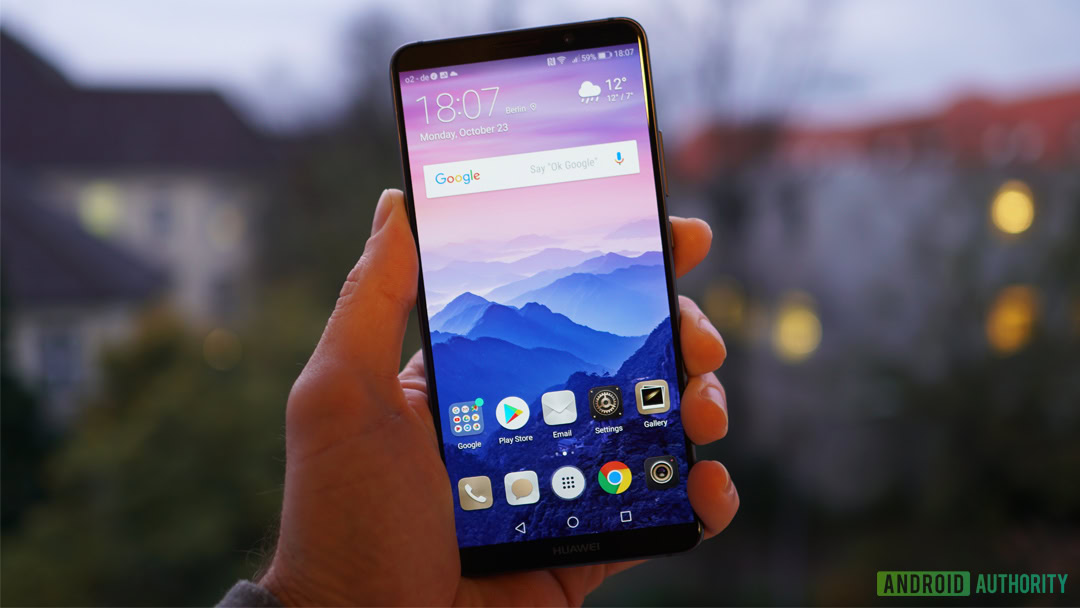
There are some notable new features to EMUI, some of which are due to the Mate 10 shipping with Android 8.0 Oreo. Oddly, HUAWEI seems to have skipped out on a few Oreo features.
On the positive side, the settings menu has been cleaned up a little, falling more in line with Google’s compact layout in Oreo.
Oddly, HUAWEI seems to have skipped out on a few Oreo features.
Project Treble guarantees the potential for faster updates in the future and HUAWEI has confirmed the Mate 10 family will get two years of Android updates and at least one major Android version bump.
Oreo features like Picture-in-Picture mode, app shortcuts, smart text selection and notification dots – oddly called badge app icons – are on board. Others are absent, like the adaptive icons and the swipe-up app drawer on the Pixel. The default setting is still an app drawer-less home screen layout, but you can change that in settings.
You can snooze notifications but there are no notification channels on the Mate 10; it’s all or nothing.
It should be evident by now that you shouldn’t look to HUAWEI for a faithful implementation of Android Oreo to a T. Though HUAWEI falls down on implementing Google features, like the Samsung of old, it makes up for it with a vast bucket of software additions.
One of the coolest HUAWEI features debuting on the Mate 10 is Projection Mode. Simply buy a USB Type-C to HDMI cable with support for Display Port 1.2 and you can plug your phone directly into an external monitor – no dock required. In this mode you can add Bluetooth peripherals like a mouse or keyboard or use the phone’s display like a trackpad. You’ll need app support for full desktop mode, but other apps will still open, just in portrait mode like on your phone.
The experience works just as advertised too. Just plug in your phone, connect your mouse and keyboard and away you go. It’s a little sluggish – and you obviously can’t be charging your phone at the same time (if you’re using a one-to-one cable like I did) – but it works. It’ll be interesting to see where this type of functionality goes in future.
Note: I tested PC mode with a USB Type-C to HDMI cable I bought on Amazon – hence not being able to charge while in PC mode. Because the Mate 10 and Mate 10 Pro support USB 3.1 though, you can screen share to a monitor and charge the device at the same time. I tested two different powered USB 3.1 hubs with HDMI ports from Anker and both of them worked fine. If you plan to use PC mode for long stretches at a time, I’d recommend picking up a powered hub rather than a cable. This and this are the hubs I tried, if you need a recommendation. In theory many others should work – but not many seem confident about claiming compatibility upfront. I’m still waiting on an official comment from HUAWEI on the matter. Thanks to Bram Peeters for raising this issue.
My personal favorite new feature though has got to be the AI-powered translation feature. Living in a foreign country, I frequently have the need for translation, and I’ve never seen anything do it as fast as Microsoft Translator on the Mate 10. If Microsoft isn’t your cup of tea, Google Translate is in the pipeline as well.
It doesn’t have a live view feature like the Google Translate app, but Microsoft’s app can translate up to 50 languages almost instantaneously. Thanks to the NPU, it all happens on-device. It works on photos taken via the app, or existing photos, or even screenshots in your gallery. All you have to do is download the language packs you need and away you go. There’s also voice translation and keyboard input.
HUAWEI has also added a smart split-screen mode. When you’re watching a video or playing a game in full-screen mode, the Mate 10 will add a split-screen icon to most messaging apps’ popup notification. The app will then appear in a window side-by-side, while your video or game continues playing in the other.
A floating navigation dock lets you remove the on-screen navigation buttons and use a little floating ball like you would with fingerprint scanner gestures. On the Mate 10 you have fingerprint scanner gestures, the floating dock, and on-screen button options, while on the Mate 10 Pro you only get the latter two.
Knuckle gestures return, with two of the more useful options being an ‘S’ to take a scrolling screenshot, and a double-knuckle double-tap to start screen recording.
You now have 30 days to recover items deleted from the phone, after which they’ll be completely gone.
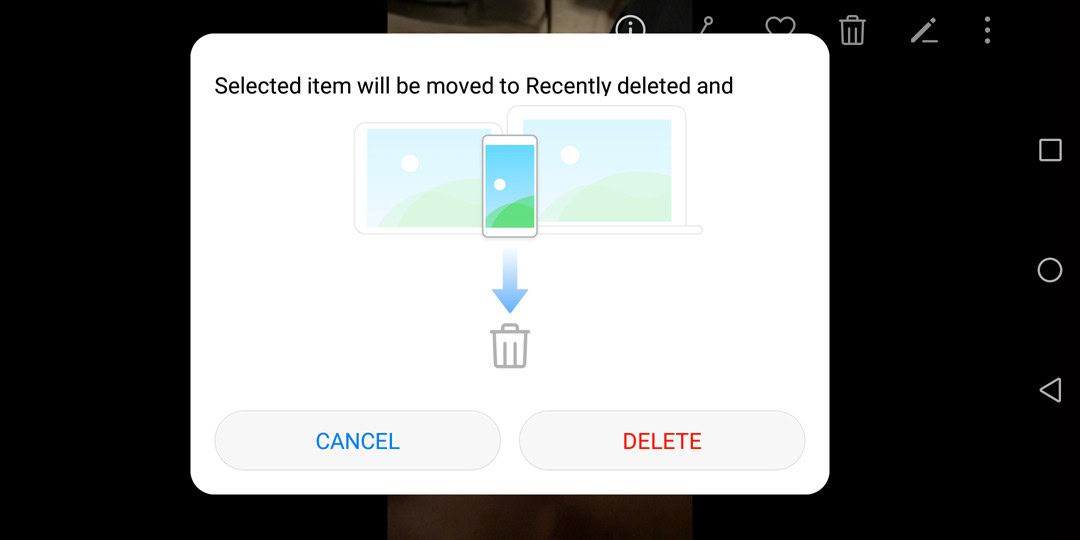
You can register a fingerprint to access a second version of your phone, so if your parents, girlfriend or immigration officials come snooping around and demand to see your phone, you can simply use your “clean” fingerprint to unlock that version. It takes a little while to open, but it works.
EMUI is a feature-packed Android skin, with most of the added benefits of Android Oreo as well. HUAWEI’s take on Android is a little rough around the edges, but there’s no denying the company is pushing the envelope where software features are concerned. Many of these could be called gimmicks, but a lot of them are really useful.
While it can be a little confusing, the Mate 10 software experience is generally smooth and rewarding. A lot of HUAWEI’s pre-loaded apps have little use, since Google has better ones available, and it would’ve been nice to see all of Oreo’s main features baked into HUAWEI’s version of Android 8.0, but EMUI is as clean and functional as it has ever been. It’s still got a ways to go before I’d say it was great, though.
Camera
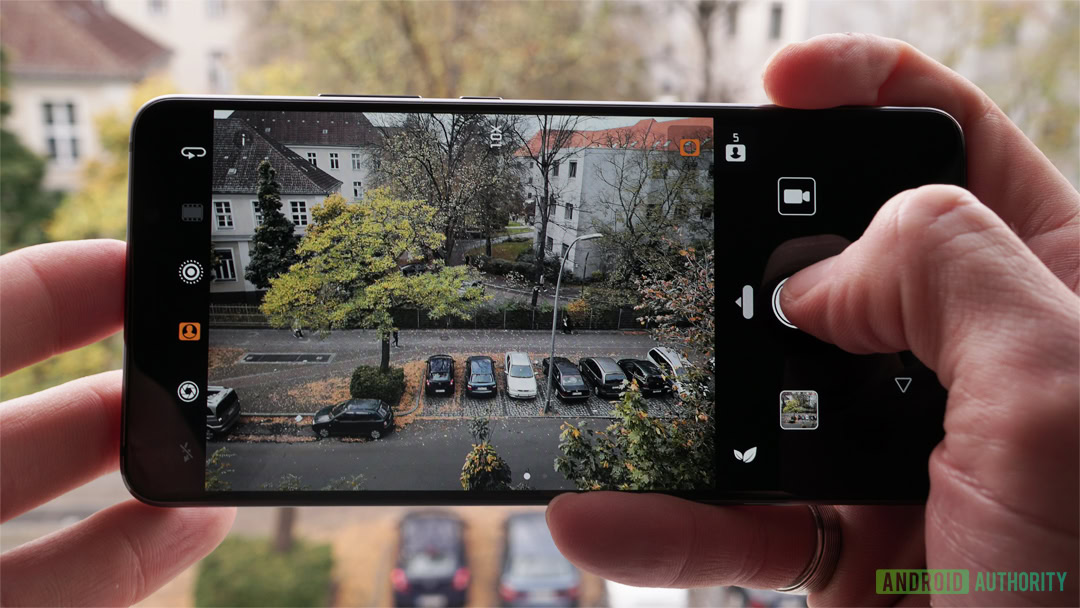
The Mate 10’s camera outperforms expectations in almost all situations. Beyond the physical hardware, which we’ll cover below, it is also assisted by the NPU in a few ways.
There’s currently 13 scenes that the NPU can recognize, automatically adjusting settings for optimum image capture. The number of compatible scenes will grow over time, and the phone reacts remarkably fast, outputting images of generally very good quality. You can always override the AI-predicted scene selection settings if you disagree, but only by going into the manual controls and switching to a preset. A simple on/off toggle in the camera would’ve been better.
The Mate 10’s camera outperforms expectations in almost all situations.
The Mate 10’s camera has a dual ISP for noise reduction and better low-light performance with a 4-way hybrid autofocus comprising laser, depth, contrast and phase detection. The Kirin 970’s NPU capabilities also enable an AI-powered bokeh mode, AI Motion Detection for reduced motion blur and a hybrid digital zoom, all of which are above average.
The Mate 10 has two Summilux-H lenses with f/1.6 aperture: one RGB sensor at 12 MP and a monochrome sensor at 20 MP resolution. They are again co-engineered with Leica and the main RGB sensor has OIS which helps a lot in low light situations.
The Mate 10 camera takes very good shots in a simple point-and-shoot scenario, with a little variation. There’s very little noise to be found in low light shots, and the OIS helps with motion blur. But it must be noted that to get those grain-free shots, the Mate 10 tends to crush blacks a bit and slightly darken the overall scene in the resulting photograph. Depending on your tastes, it maintains better image integrity after the fact, but low light photos can be a little less poppy and light than those shot on the Pixel 2 or Note 8 for example.
In contrast to this slight underexposure, bright spots in low-light photos tend to be a little blown out, like in the shot of the river above. The scene wasn’t quite as dark as this shot would imply, but the warning lights on the bridge are half white and half red, a fact the Pixel 2 managed to pick up, even if there was much more noise in the photo.
Where other devices balance things out a little more at the cost of added grain, the Mate 10 seems to be on a mission to stamp out noise at the expense of color and “reality”. Personally, I appreciate the sharper details, and I can always lighten the shadows in post, but your mileage may vary.
Oddly enough, a more familiar result comes when using the hybrid digital zoom. The level of detail achieved is quite remarkable, but the overall image is much lighter than the regular shot with its pitch blacks. You get more noise, but there’s also much more visible in the shadows, as you can see in the shot of Berlin’s TV Tower above. The hybrid zoom definitely produces more detail than a zoomed-in regular photo.
Bizarrely, I found the Mate 10's HDR mode to be a little unreliable. A similar level of hit-or-miss occurred with the AI scene selection.
Bizarrely, I found the Mate 10’s HDR mode to be a little unreliable. A similar level of hit-or-miss occurred with the AI scene selection. The Mate 10 has a tendency to produce very different photos if you shoot a couple in a row. Normally this could be explained by the AI not recognizing the scene in one of them. In HDR mode, even when focused on the exact same spot, the phone would lighten shadows in some photos, but darken them in others. You almost always get a great shot, but I’d recommend always firing off a couple just to have options.
The AI Motion Detection function is really impressive. I took several shots that on almost any other phone would’ve produced at least some degree of blur, even in good lighting, but the Mate 10 managed crisp shots without a hint of movement. From a shot of basketballers jumping in the air in decent but overcast lighting to a running frisbee shot in low light, the Mate 10’s ability to capture moving subjects without blur was impressive.
The bokeh mode is also pretty good. While these software modes have improved across the board in the last year, the Mate 10 does an admirable job, lining up well against the Pixel 2, even if that phone manages the effect with dual pixels rather than a dual-lens setup.
The software missteps on occasion, but the results are generally more than good enough for a new profile pic or social share. They always look a little artificial, but in the absence of a DSLR or mirrorless camera, it’s the next best thing.
The front-facing 8 MP f/2.0 lens is perfectly fine for the average selfie, but if you want the best shots you’d do better perfecting your selfie arm to use the main sensor. I took a few shots covering the monochrome sensor, and while there’s less detail, it’s barely noticeable even when zoomed right in. As a fan of the LG V30’s wide-angle camera, I can only imagine how amazing this camera would be with that as a secondary lens or even a 2x zoom lens.
If I had to criticize the Mate 10 camera it'd be for over-sharpening.
If I had to criticize the Mate 10 camera it’d be for over-sharpening, which can be pushed to such an extreme that the resulting photos look fake. Some of this may be down to the AI scene detection, but as you can see in this photo of a dog yawning, the ISP has tried so hard to sharpen up the details that it ends up looking odd. This other shot of a dog looks perfectly fine though.
You can pick a color profile from standard, vivid or smooth colors. All the usual HUAWEI camera modes are also there, including monochrome, 3D panorama, light painting, night shot and slo-mo. Pro mode is also there if you want full control over ISO, white balance, exposure compensation, shutter speed and more. It’s even got a motion photo option like you’ll find on the Pixel 2 or iPhone.
Where the Mate 9 was a manual photographer’s dream, the Mate 10 has stepped up its full auto game. The addition of AI produces some great results, even if the handling of shadows and low light might not be to everyone’s tastes. Occasionally you will feel like you’re battling against our new AI overlords as you struggle to retain control over the resulting photo, though.
If the cameras on HUAWEI phones put you off in the past because they seemed too complicated, those days are over. The HUAWEI Mate 10 is just as good a point-and-shoot smartphone camera as any other. It just has a little “character” you’ll need to get used to, or just go full manual.
Specifications
| HUAWEI Mate 10 | HUAWEI Mate 10 Pro | Porsche Design Mate 10 | |
|---|---|---|---|
Display | HUAWEI Mate 10 5.9-inch HUAWEI FullView IPS LCD 3D glass 2560 x 1440 resolution 498 ppi 16:9 aspect ratio | HUAWEI Mate 10 Pro 6.0-inch HUAWEI FullView OLED 2160 x 1080 resolution 402 ppi 18:9 aspect ratio | Porsche Design Mate 10 6.0-inch HUAWEI FullView OLED 2160 x 1080 resolution 402 ppi 18:9 aspect ratio |
Processor | HUAWEI Mate 10 HUAWEI Kirin 970 Octa-core CPU (4 Cortex A73 2.36 GHz + 4 Cortex A53 1.8 GHz) + i7 co-processor + NPU | HUAWEI Mate 10 Pro HUAWEI Kirin 970 Octa-core CPU (4 Cortex A73 2.36 GHz + 4 Cortex A53 1.8 GHz) + i7 co-processor + NPU | Porsche Design Mate 10 HUAWEI Kirin 970 Octa-core CPU (4 Cortex A73 2.36 GHz + 4 Cortex A53 1.8 GHz) + i7 co-processor + NPU |
GPU | HUAWEI Mate 10 Mali-G72 MP12 | HUAWEI Mate 10 Pro Mali-G72 MP12 | Porsche Design Mate 10 Mali-G72 MP12 |
RAM | HUAWEI Mate 10 4 GB LPDDR4 | HUAWEI Mate 10 Pro 4 / 6 GB LPDDR4 | Porsche Design Mate 10 6 GB LPDDR4 |
Storage | HUAWEI Mate 10 64 GB MicroSD expansion up to 256 GB (uses SIM 2 slot) | HUAWEI Mate 10 Pro 64 / 128 GB No MicroSD card slot | Porsche Design Mate 10 256 GB No MicroSD card slot |
Cameras | HUAWEI Mate 10 Rear cameras: 20 MP Monochrome + 12 MP RGB sensors f/1.6 in both lenses, OIS (color sensor only), BSI CMOS, dual-LED flash, PDAF+CAF+Laser+Depth auto focus, 2x Hybrid Zoom, 4K video recording Front camera: 8 MP sensor with an f/2.0 aperture, fixed focus | HUAWEI Mate 10 Pro Rear cameras: 20 MP Monochrome + 12 MP RGB sensors f/1.6 in both lenses, OIS (color sensor only), BSI CMOS, dual-LED flash, PDAF+CAF+Laser+Depth auto focus, 2x Hybrid Zoom, 4K video recording Front camera: 8 MP sensor with an f/2.0 aperture, fixed focus | Porsche Design Mate 10 Rear cameras: 20 MP Monochrome + 12 MP RGB sensors f/1.6 in both lenses, OIS (color sensor only), BSI CMOS, dual-LED flash, PDAF+CAF+Laser+Depth auto focus, 2x Hybrid Zoom, 4K video recording Front camera: 8 MP sensor with an f/2.0 aperture, fixed focus |
Battery | HUAWEI Mate 10 4,000 mAh Non-removable HUAWEI SuperCharge | HUAWEI Mate 10 Pro 4,000 mAh Non-removable HUAWEI SuperCharge | Porsche Design Mate 10 4,000 mAh Non-removable HUAWEI SuperCharge |
IP rating | HUAWEI Mate 10 IP53 | HUAWEI Mate 10 Pro IP67 | Porsche Design Mate 10 IP67 |
SIM | HUAWEI Mate 10 Dual SIM Primary SIM: 4G Secondary SIM: 2G/3G/4G | HUAWEI Mate 10 Pro Dual SIM Primary SIM: 4G Secondary SIM: 2G/3G/4G | Porsche Design Mate 10 Dual SIM Primary SIM: 4G Secondary SIM: 2G/3G/4G |
3.5 mm headphone jack | HUAWEI Mate 10 Yes | HUAWEI Mate 10 Pro No | Porsche Design Mate 10 No |
Connectivity | HUAWEI Mate 10 Wi-Fi 2.4 G, 802.11a/b/g/n/ac with Wi-Fi Direct support Bluetooth 4.2, support BLE support aptX/aptX HD and LDAC HD Audio USB Type-C DisplayPort 1.2 | HUAWEI Mate 10 Pro Wi-Fi 2.4 G, 802.11a/b/g/n/ac with Wi-Fi Direct support Bluetooth 4.2, support BLE support aptX/aptX HD and LDAC HD Audio USB Type-C DisplayPort 1.2 | Porsche Design Mate 10 Wi-Fi 2.4 G, 802.11a/b/g/n/ac with Wi-Fi Direct support Bluetooth 4.2, support BLE support aptX/aptX HD and LDAC HD Audio USB Type-C DisplayPort 1.2 |
Software | HUAWEI Mate 10 Android 8.0 Oreo EMUI 8.0 | HUAWEI Mate 10 Pro Android 8.0 Oreo EMUI 8.0 | Porsche Design Mate 10 Android 8.0 Oreo EMUI 8.0 |
Colors | HUAWEI Mate 10 Mocha Brown, Black, Champagne Gold, Pink Gold | HUAWEI Mate 10 Pro Midnight Blue, Titanium Gray, Mocha Brown, Pink Gold | Porsche Design Mate 10 Diamond Black |
Dimensions and weight | HUAWEI Mate 10 150.5 x 77.8 x 8.2 mm 186 g | HUAWEI Mate 10 Pro 154.2 x 74.5 x 7.9 mm 178 g | Porsche Design Mate 10 154.2 x 74.5 x 7.9 mm 178 g |
Gallery
Pricing & Final Thoughts
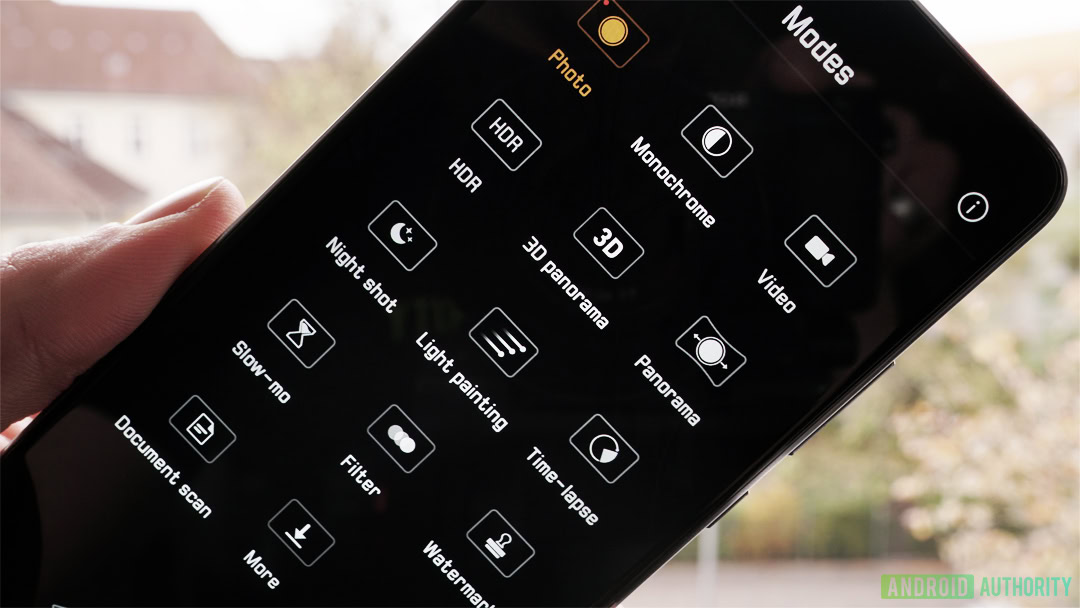
The HUAWEI Mate 10 is the most mainstream smartphone the company has ever produced. It retains its slick looks while switching to the current trend of a glass front and back. It retains its massive battery while adding an even more efficient chipset and AI optimizations. It takes what used to be a full-featured but complicated camera and makes it incredibly reliable for pick-up-and-shoot photographers.
HUAWEI is among the first to ship with Android Oreo out of the box, but software is where the Mate 10 is let down a little. EMUI is convoluted, confusing and occasionally downright weird. There are more software features here than you can poke a stick at, but it’ll take you a good long while to discover them all and you can expect a few hiccups along the way.
HUAWEI is really bringing its A-game with the Mate 10 though, putting up its most convincing challenge to competing devices like the Note 8, Pixel 2 and V30 yet. HUAWEI’s brand name may still not be as popular in the West as the company would like it to be, but devices like the Mate 10 and Mate 10 Pro will help turn that around.
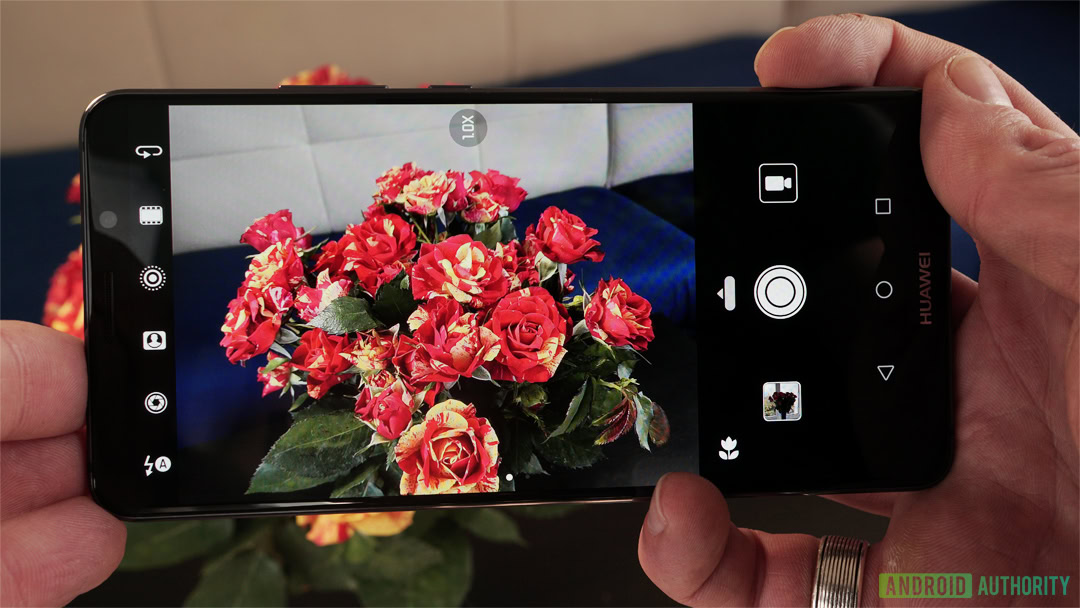
Despite a few questionable choices, the Mate 10 and Mate 10 Pro are really nice phones. The weird mixture of missing features between them will make picking one a slightly harder task, as not all the “best” features are necessarily in the Pro model. Where a company like Samsung knows you’re better off putting all your eggs in the flagship basket, HUAWEI is taking a risk here.
At 699 euro, the Mate 10 has all the regular bases covered, but at 799 euro the Mate 10 Pro is only superior in some ways. It’ll be the only version to make it to the US though, with local pricing and availability coming soon.
There’s an awful lot to love about the HUAWEI Mate 10 and Mate 10 Pro, and, while they might not yet be meeting Samsung head to head, they’re another positive step in that direction. If HUAWEI comes through on all — or even most — of the promises the Mate 10 makes, then they’re guaranteed to only get better over time.